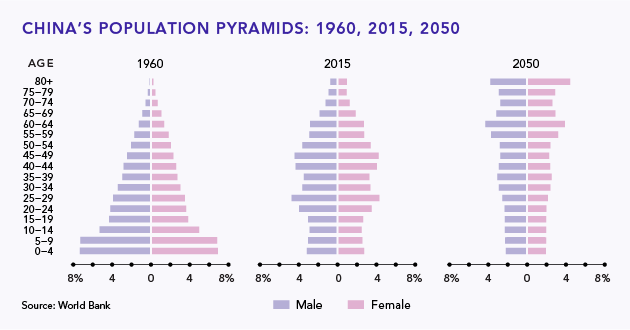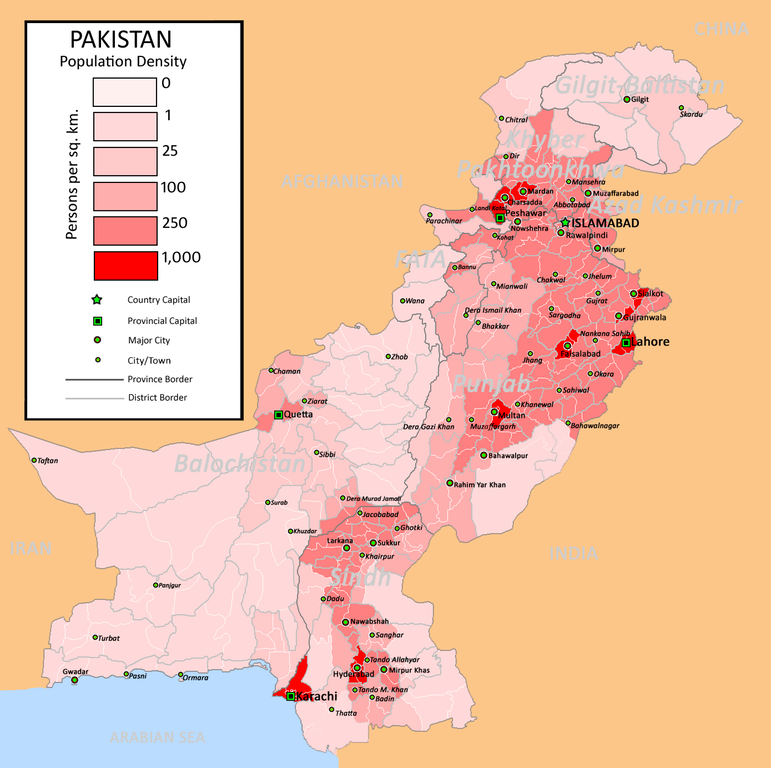The population policy of China is always in the limelight due to its one-child policy, which plays an important role in preventing the tremendous growth of the population policy of China and also has consequences like ageing.
Here, we will discuss all the details of the Chinese population policy and how it affects the social structure of the country as well as its occupational structure.
What is the population policy of China?

The desire to control population growth and address various social, economic, and environmental issues has influenced China’s population policies. Between 1979 and 2015, the One-Child Policy was a key population planning initiative that aimed to limit most Chinese families to one child each. The policy was implemented to address the country’s rapid population growth, which the government deemed excessive.
Key aspects of the one-child policy include:
- Voluntary programme: In the late 1970s, a voluntary programme encouraging families to have no more than two children, with one child preferred, was announced.
- The one-child policy was tightened in 1979, limiting most families to one child each.
- Violators of the policy could face fines, being forced to have abortions or sterilisations, or losing their jobs.
- Exceptions: The policy had exceptions for ethnic minorities, those whose firstborn was labeled as disabled, and rural families whose first born was not a boy.
After 1980, the One-Child Policy reduced China’s fertility and birth rates, with the fertility rate declining and falling below two children per woman in the mid-1990s. However, the policy had unintended consequences, including an ageing population, a gender imbalance, and a shrinking workforce. The One-Child Policy was replaced in 2016 by a new policy that permitted Chinese families to have two children.
What were the consequences of China’s one-child policy?
China’s one-child policy had far-reaching and multifaceted consequences. The policy resulted in a lower fertility rate, a skewed gender ratio as families preferred male children, and a labour shortage due to a shrinking workforce. Furthermore, the policy resulted in a variety of social consequences, including instances of forced sterilisation and abortion, as well as the abandonment of female babies.
Furthermore, among the long-term consequences of this population control measure were the ageing population and the difficulties faced by undocumented children born in violation of the policy.
How did the one-child policy affect China’s ageing population?
China’s one-child policy has had a significant impact on the ageing population of the country. The policy reduced fertility rates, resulting in a rapidly ageing population with insufficient financial resources.
The Chinese government is concerned about the ageing population because the vast majority of senior citizens in China rely on their children for support, and there are fewer children to support them.
The policy also resulted in a skewed gender ratio, as families preferred male children, and a labour shortage as the workforce shrank.
What measures has the Chinese government taken to address the ageing population?
The Chinese government has taken several steps to address the ageing population and the issues that come with it. Among these measures are:
1. Active National Population Aging Initiative: This initiative, which was launched in China, aims to address the challenges of an ageing population by encouraging healthy ageing and improving the quality of life for the elderly.
2. Expanding elderly care services: China is working to build a basic elderly care system by 2025, with guidelines requiring all provinces to implement a list of basic elderly care services, such as material assistance, nursing and care-giving, and visiting and caring services for the elderly who live alone.
3. Two-child policy: In 2016, China replaced the one-child policy with a two-child policy, to increase labour force participation and address the ageing population.
4. More affordable nursery services: The government intends to introduce more affordable nursery services in order to encourage more births and address issues related to the country’s rapidly ageing population.
5. Relaxing family planning policies: Population experts have called for more inclusive population policies to improve fertility, workforce quality, and population structure.
6. Addressing poverty and economic development: The government is focusing on reducing poverty and developing the economy, both of which have been harmed by the ageing population, particularly in rural areas.
These policies are intended to address the challenges posed by China’s ageing population, such as the burden on healthcare and social care systems, the decline in labour force participation, and the growing number of elderly living alone.
What is China’s current policy?
The current population policy in China is the two-child policy, which was implemented in 2016 to address the ageing population issue as well as the labour shortage caused by the one-child policy. The two-child policy allows Chinese families to have two children, with the goal of increasing the workforce and improving population quality.
Some key aspects of the two-child policy include:
1. **Encouraging more births**: The policy seeks to increase the official fertility rate, which fell to a record low of 10.48 in 2018.
2. **Addressing the ageing population**: The policy aims to address the challenges posed by China’s rapidly ageing population, such as the burden on healthcare and social care systems, labor-force decline, and an increasing number of elderly living alone.
3. **Improving workforce quality**: The two-child policy is expected to improve workforce quality by providing a larger pool of young people to choose from.
To address the challenges posed by the ageing population, the Chinese government has introduced measures to make nursery services more affordable, as well as relaxed limits on the one-child policy in rural areas.
https://www.hrw.org/world-report/2022/country-chapters/china-and-tibet
https://en.wikipedia.org/wiki/Politics_of_China


Pingback: Population policy of Pakistan - Geography Study
Pingback: Geography of Chhattisgarh - Geography Study
Pingback: Contributions of Greek Scholars in Geography - Geography Study